In today’s rapidly evolving business landscape, companies are constantly seeking ways to streamline their operations, boost efficiency, and bring products to market faster. One of the most effective approaches to achieving these goals is through the implementation of Agile Product Lifecycle Management (PLM) practices. When combined with a robust Enterprise Resource Planning (ERP) system like NetSuite, organizations can unlock unprecedented levels of productivity and innovation.
NetSuite, a leading cloud-based ERP solution, offers a comprehensive suite of tools that can be leveraged to support Agile PLM processes. In this blog post, we’ll dive deep into NetSuite’s capabilities and explore how they can be utilized to create a more responsive, flexible, and efficient product development ecosystem.
The Intersection of PLM and Agile Methodology
Before we delve into NetSuite’s specific features, it’s important to understand the synergy between PLM and Agile methodology. Traditional PLM approaches often followed a linear, waterfall-style process, which could be rigid and time-consuming. Agile methodology, on the other hand, emphasizes iterative development, rapid prototyping, and continuous improvement.
By applying Agile principles to PLM, organizations can:
- Accelerate time-to-market
- Improve product quality through frequent feedback loops
- Enhance collaboration among cross-functional teams
- Adapt quickly to changing market demands
- Reduce waste and optimize resource allocation
NetSuite’s cloud-based architecture provides the perfect foundation for implementing Agile PLM practices. Let’s explore some of the key features and capabilities that make NetSuite an ideal platform for this approach.
Workflow Automation and Process Management
One of the cornerstones of Agile PLM is the ability to streamline and automate workflows. NetSuite offers powerful tools for creating and managing custom workflows that align with Agile principles:
SuiteFlow: This visual workflow designer allows users to create complex, multi-step processes without coding. It’s perfect for automating approval chains, stage-gate processes, and other PLM-related workflows. With SuiteFlow, teams can easily design and implement workflows that support Agile sprints, facilitate rapid prototyping, and ensure smooth transitions between different stages of the product lifecycle.
For example, a product development team could create a workflow that automatically notifies relevant stakeholders when a new product concept moves from ideation to prototyping, triggers the creation of necessary documentation, and initiates procurement processes for required materials.
SuiteScript: For more advanced customizations, SuiteScript provides a JavaScript-based development platform. This allows organizations to tailor NetSuite’s functionality to their specific Agile PLM needs. Skilled developers can create custom scripts to automate complex processes, integrate with external systems, or add entirely new features to the NetSuite platform.
A practical application of SuiteScript in Agile PLM might be the creation of a custom dashboard that pulls data from various NetSuite modules to provide real-time visibility into product development progress, resource utilization, and key performance indicators (KPIs).
Bill of Materials (BOM) Management
Effective BOM management is crucial for any PLM system, and NetSuite excels in this area. The platform offers:
– Multi-level BOM support: This allows for the creation and management of complex product structures with multiple sub-assemblies and components.
– Revision control and versioning: Teams can track changes to BOMs over time, ensuring that everyone is working with the most up-to-date information.
– Easy import/export of BOM data: This facilitates collaboration with external partners and suppliers.
– Integration with inventory and procurement modules: This ensures that material requirements are accurately reflected in purchasing and production planning.
These features enable teams to quickly iterate on product designs, manage complex assemblies, and maintain accurate records of product components throughout the development process. For instance, when a design change is made, the system can automatically update the BOM, adjust inventory requirements, and notify the procurement team of any new component needs.
Change Management and Version Control
In an Agile environment, change is constant. NetSuite provides robust change management and version control capabilities to help teams stay on top of evolving product designs:
– Engineering Change Orders (ECO) management: This feature allows for the systematic tracking and approval of design changes, ensuring that all modifications are properly documented and communicated.
– Revision tracking for items and BOMs: Every change to a product or component is recorded, creating a complete history of the product’s evolution.
– Audit trails for all changes: This provides accountability and traceability, which is crucial for regulatory compliance and quality assurance.
– Role-based access control: This ensures that only authorized personnel can make or approve changes, maintaining the integrity of the product data.
These tools allow cross-functional teams to collaborate effectively while maintaining a clear history of product evolution. For example, when a design engineer proposes a change to improve product performance, the ECO process in NetSuite can automatically route the proposal to the appropriate reviewers, track their approvals, and update all relevant documentation once the change is approved.
Real-time Collaboration and Communication
Agile methodologies emphasize the importance of frequent communication and collaboration. NetSuite facilitates this through:
– Built-in messaging and commenting features: Team members can communicate directly within the context of specific records or transactions, reducing the need for separate communication tools.
– Task assignment and tracking: Project managers can assign tasks to team members and track their progress in real-time.
– Shared dashboards and reports: These provide a common view of project status, KPIs, and other critical information to all team members.
– Integration with external collaboration tools: NetSuite can be connected to popular collaboration platforms like Slack or Microsoft Teams, creating a seamless communication ecosystem.
By centralizing communication within the PLM system, teams can reduce silos and ensure that everyone has access to the most up-to-date information. This is particularly valuable in Agile environments where rapid decision-making and quick pivots are often necessary.
Supply Chain Integration
One of NetSuite’s strengths is its comprehensive supply chain management capabilities. When applied to Agile PLM, this integration offers several benefits:
– Real-time visibility into supplier capabilities and inventory levels: This allows product teams to make design decisions based on current supply chain realities.
– Streamlined procurement processes: Automated purchasing workflows can be triggered based on BOM changes or project milestones.
– Improved demand forecasting and planning: By integrating product development data with sales and marketing information, organizations can create more accurate demand forecasts.
– Enhanced supplier collaboration through portals and shared data: This facilitates faster communication and problem-solving with key suppliers.
By tightly coupling PLM with supply chain management, organizations can reduce lead times, optimize inventory levels, and respond more quickly to market changes. For instance, if a critical component becomes scarce, the product development team can be immediately notified and can explore alternative designs or suppliers without delay.
Quality Assurance and Compliance Tracking
Maintaining product quality and ensuring regulatory compliance are critical aspects of PLM. NetSuite provides tools to support these efforts:
– Quality control checklists and inspections: These can be customized for each product and integrated into the production process.
– Non-conformance reporting and corrective actions: When quality issues are identified, NetSuite can trigger workflows to address and resolve them.
– Compliance tracking and documentation management: This ensures that all regulatory requirements are met and properly documented throughout the product lifecycle.
– Integration with quality management systems: NetSuite can be connected to specialized quality management tools for more complex quality control processes.
These features help teams maintain high standards throughout the product lifecycle while adhering to industry regulations and standards. For example, a medical device manufacturer could use NetSuite to track all the documentation required for FDA approval, ensuring that each step of the development process complies with regulatory requirements.
Get in Touch
We know what NetSuite can do and how it can help you. Schedule your free NetSuite assessment today
Data Analytics and KPI Tracking
Data-driven decision-making is a key tenet of Agile methodology. NetSuite’s robust analytics capabilities support this approach through:
– Customizable dashboards and reports: Teams can create visual representations of key data points that are most relevant to their Agile PLM processes.
– Real-time KPI tracking: Metrics such as cycle time, defect rates, and resource utilization can be monitored in real-time.
– Advanced data visualization tools: Complex data sets can be transformed into easily understandable charts and graphs.
– Predictive analytics for demand forecasting: By analyzing historical data and market trends, NetSuite can help teams anticipate future product demand.
By leveraging these analytics features, product teams can make informed decisions, identify trends, and continuously improve their processes. For instance, by analyzing data on past product launches, a team might identify that certain types of design changes tend to cause delays, allowing them to proactively address these issues in future projects.
Product Configurator and Customization
For companies that offer customizable products, NetSuite’s product configurator is a valuable tool. It allows for:
– Dynamic pricing based on selected options: As customers or sales reps configure a product, pricing is automatically updated.
– Rule-based configuration logic: This ensures that only valid combinations of options are selected.
– Integration with BOM and inventory management: Configured products automatically generate the correct BOM and check inventory availability.
– Visual representation of configured products: This helps customers and sales teams understand exactly what they’re ordering.
This functionality supports the Agile principle of responding to customer needs by enabling rapid customization and prototyping of product variants. For example, a furniture manufacturer could use the configurator to allow customers to design their own sofas, with the system automatically generating production specifications and cost estimates.
Scalability and Growth Support
As organizations grow and evolve, their PLM needs may change. NetSuite’s scalable architecture ensures that the system can adapt to these changing requirements:
– Modular design allows for gradual feature adoption: Companies can start with basic PLM functionality and add more advanced features as needed.
– Multi-subsidiary support for global operations: This is crucial for companies expanding into new markets or managing multiple brands.
– Customizable user interfaces to match evolving workflows: As Agile processes mature, the NetSuite interface can be adjusted to support new ways of working.
– Extensive API library for integration with other systems: This allows NetSuite to connect with specialized tools for design, simulation, or other PLM-related functions.
This scalability ensures that NetSuite can continue to support an organization’s Agile PLM processes as they mature and expand. A startup might begin with basic product management features and gradually adopt more sophisticated PLM capabilities as they grow, without needing to switch to a new system.
Implementing Agile PLM with NetSuite: Best Practices
While NetSuite provides a robust set of tools for Agile PLM, successful implementation requires careful planning and execution. Here are some best practices to consider:
- Start with a Clear Vision
Before diving into implementation, it’s crucial to define your organization’s Agile PLM goals. What specific challenges are you trying to address? How will success be measured? Having a clear vision will guide your configuration and customization efforts.
For example, your vision might be to reduce time-to-market by 30% while improving product quality and customer satisfaction. This vision would then inform decisions about which NetSuite features to prioritize and how to configure workflows.
- Adopt an Iterative Approach
Embrace the Agile mindset in your NetSuite implementation. Start with a minimum viable product (MVP) configuration and gradually add features and customizations based on user feedback and evolving needs.
You might begin by implementing basic BOM management and change control processes, then add more advanced features like the product configurator or advanced analytics in subsequent phases.
- Invest in Training and Change Management
Transitioning to an Agile PLM approach often requires significant changes in processes and mindsets. Invest in comprehensive training programs for your team and develop a change management strategy to ensure smooth adoption.
This might involve creating role-specific training modules, appointing “NetSuite champions” within each department, and establishing a feedback loop to address user concerns and suggestions.
- Leverage NetSuite’s SuiteCloud Platform
Take advantage of NetSuite’s extensibility by exploring the SuiteCloud platform. This set of development tools allows for deep customizations and integrations that can tailor the system to your specific Agile PLM requirements.
For instance, you might use SuiteScript to create a custom user interface for your product development team that combines data from multiple NetSuite modules into a single, easy-to-use dashboard.
- Implement Role-based Access Control
Use NetSuite’s granular permission settings to implement role-based access control. This ensures that team members have access to the information and tools they need while maintaining data security and integrity.
For example, design engineers might have full access to product development records, while procurement specialists would have limited access focused on component sourcing and costing information.
- Integrate with Agile Project Management Tools
While NetSuite offers robust project management capabilities, you may want to integrate with specialized Agile tools like Jira or Trello. Explore NetSuite’s API options to create seamless connections between these systems.
This integration could allow for automatic synchronization of project tasks and status updates between NetSuite and your Agile project management tool, ensuring that all team members are working with the most current information regardless of which system they’re using.
- Establish a Continuous Improvement Process
Set up regular review cycles to assess your Agile PLM processes and NetSuite configuration. Use the platform’s analytics tools to identify bottlenecks and areas for improvement.
This might involve monthly meetings to review key metrics, discuss user feedback, and prioritize system enhancements or process changes.
- Leverage the NetSuite Community
Tap into the wealth of knowledge available through the NetSuite community. Participate in forums, attend user group meetings, and engage with other organizations using NetSuite for Agile PLM to share best practices and learn from others’ experiences.
You might discover innovative ways other companies are using NetSuite for PLM, or find solutions to challenges you’re facing in your own implementation.
By following these best practices, organizations can maximize the value they derive from NetSuite in supporting their Agile PLM initiatives. Remember, the key to success lies in viewing the implementation as an ongoing process of refinement and improvement, rather than a one-time project.
In conclusion, NetSuite’s comprehensive suite of features and its flexible, cloud-based architecture make it an excellent foundation for implementing Agile Product Lifecycle Management. By leveraging tools like SuiteFlow, SuiteScript, and the platform’s robust supply chain and inventory management capabilities, organizations can create a responsive, data-driven PLM environment that aligns with Agile principles.
As NetSuite continues to evolve and expand its capabilities, it will undoubtedly play an increasingly important role in shaping the future of Agile PLM. For companies looking to stay competitive in today’s fast-paced market, exploring NetSuite’s capabilities for Agile PLM is not just an option – it’s a strategic imperative. By harnessing the power of this versatile platform, organizations can unlock new levels of innovation, efficiency, and agility in their product development processes.
FAQs:
Agile PLM is a flexible, iterative approach to managing the entire lifecycle of a product from inception to end-of-life. Unlike traditional PLM, which often follows a linear, waterfall-style process, Agile PLM emphasizes continuous feedback, rapid prototyping, and the ability to adapt quickly to changes. This approach accelerates time-to-market, improves product quality, and enhances collaboration among cross-functional teams.
NetSuite provides a comprehensive suite of tools tailored for Agile PLM, including workflow automation, real-time collaboration, change management, and data analytics. Its cloud-based architecture allows teams to create flexible, responsive workflows, manage complex product data, and integrate seamlessly with other business processes, making it an ideal platform for Agile PLM.
SuiteFlow is a visual workflow designer in NetSuite that allows users to create and automate complex, multi-step processes without the need for coding. In the context of Agile PLM, SuiteFlow helps teams design workflows that align with Agile sprints, automate approval processes, and facilitate rapid prototyping, ensuring smooth transitions between different stages of the product lifecycle.
NetSuite’s Bill of Materials (BOM) management features include multi-level BOM support, revision control, and integration with inventory and procurement modules. These capabilities allow teams to manage complex product structures, quickly iterate on designs, and maintain accurate records, all of which are essential for Agile PLM’s iterative and adaptive nature.
Change management and version control are critical in Agile PLM to track the evolution of product designs and ensure that changes are properly documented and communicated. NetSuite supports this with Engineering Change Orders (ECO) management, revision tracking, audit trails, and role-based access control, enabling teams to manage changes efficiently and maintain product integrity.
NetSuite fosters real-time collaboration through built-in messaging, task assignment and tracking, shared dashboards, and integration with external tools like Slack or Microsoft Teams. These features centralize communication within the PLM system, ensuring that all team members are aligned and have access to the most current information, which is vital for Agile methodologies.
NetSuite’s integration with supply chain management provides real-time visibility into supplier capabilities, streamlines procurement processes, and enhances demand forecasting. This integration allows product teams to make informed design decisions based on current supply chain realities, reducing lead times and optimizing inventory levels to support Agile PLM.
NetSuite provides quality control checklists, non-conformance reporting, compliance tracking, and integration with quality management systems. These tools help maintain product quality and ensure regulatory compliance throughout the product lifecycle, which is crucial for Agile PLM’s focus on continuous improvement and responsiveness to market demands.
NetSuite’s data analytics features, including customizable dashboards, real-time KPI tracking, and advanced data visualization, enable teams to make data-driven decisions. These tools allow for the identification of trends, monitoring of key metrics, and continuous process improvement, which are essential for the success of Agile PLM.
NetSuite’s modular design, multi-subsidiary support, customizable user interfaces, and extensive API library make it a scalable solution for Agile PLM. As organizations grow and their PLM needs evolve, NetSuite can adapt by gradually adopting more advanced features and integrating with other specialized systems, ensuring that the platform continues to support Agile processes at any scale.








